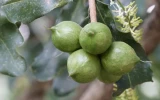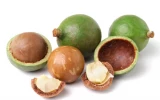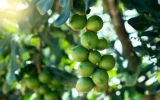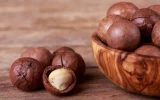What Does a Macadamia Nut Tree Look Like (With Images)
Originating from the coastal rainforests of Australia, the macadamia nut tree has become a prized plant in gardens and commercial orchards around the world, and for a good reason. In this article, we aim to provide a comprehensive depiction of its unique attributes, detailing each characteristic to facilitate easy identification as you encounter this remarkable tree.
Macadamia trees are small trees growing only up to 40 feet. They have dense dark green foliage and lance-shaped leaves growing up to a foot in length. They produce delicate flowers in long, slender racemes up to 12 inches, ranging from white to pink, and possessing a subtle, sweet fragrance.
They produce round to oval nuts encased in hard, woody shells. As you scroll through the rest of the article, you'll also be able to identify different macadamia species as we provide images of each and describe their differences.
Having a visual reference for identifying macadamia trees could be marginally helpful for a complete beginner when setting up a macadamia farm.
Summary
- The lanceolate shape of the glossy, dark green, leathery leaves of the macadamia nut tree not only adds to its visual appeal but also maximizes sunlight absorption and may help in reducing water loss through transpiration.
- The flowers of the macadamia nut tree, with their small and delicate clusters ranging in color from creamy white to soft pinkish hues, create a visually appealing and elegant display, complemented by a sweet and pleasant fragrance with a subtle hint of nuttiness.
- Macadamia jansenii is known for its distinctive pink or red new growth, attributed to the presence of anthocyanin pigments in the leaves, which not only adds to its visual appeal but may also serve as a natural defense mechanism against environmental stresses.
- Macadamia tetraphylla is unique among macadamia species due to its four leaflets per leaf, whereas other macadamia species typically have two leaflets per leaf.
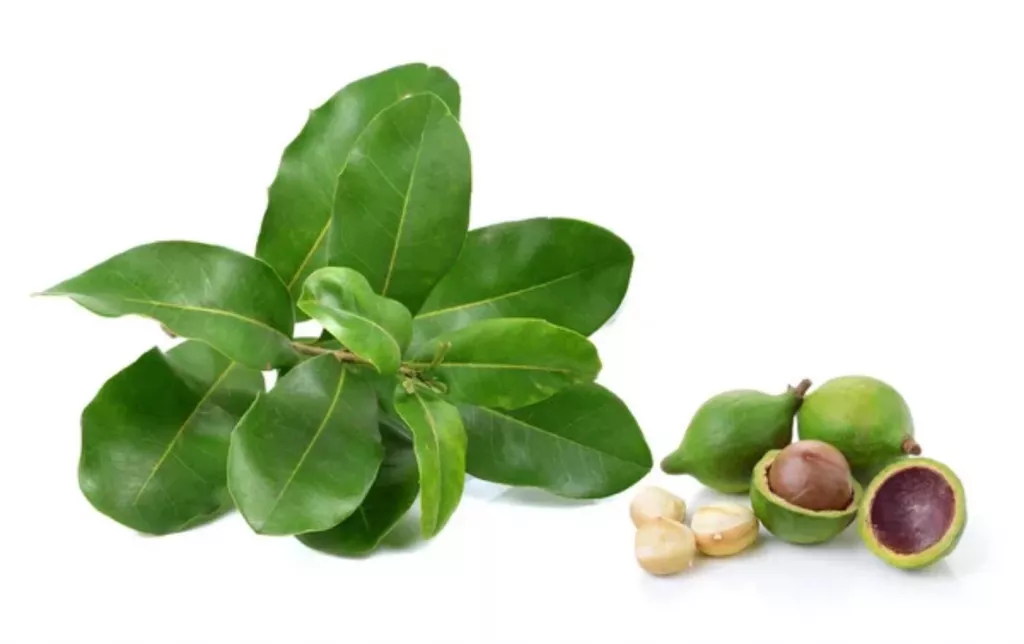
On this page:
Identifying the Unique Features of a Macadamia Nut Tree
The Macadamia tree, an evergreen beauty, offers a wealth of lush foliage and attractive flowers. In this guide, we will give you a vivid picture of its distinctive features to help you differentiate them from other nut trees:
| Characteristics | Description |
|---|---|
| Growth and size | These trees are slow-growing and can reach heights of 30 to 40 feet with a spread of 20 to 30 feet. |
| Leaf structure and appearance | Macadamia nut trees have glossy, dark green, leathery leaves with a lanceolate shape. |
| Blossoms and flowers | Macadamia nut trees produce small, creamy white to pinkish flowers in clusters. |
| Fruit and nut formation | The trees produce round, hard-shelled nuts with a smooth, woody husk, containing rich, creamy, flavorful nuts. |
Growth and size of the macadamia tree
The macadamia tree has a distinctive appearance that reflects its slow-growing nature and impressive size. One fact about these trees is that they can reach heights of 30 to 40 feet and have a spread of 20 to 30 feet, creating a substantial and majestic presence in the landscape.
The trunk is sturdy and often has a gnarled, textured bark that adds to its visual appeal. The branches extend gracefully from the trunk, forming a broad canopy that provides ample shade and shelter.
Leaf structure and appearance of the macadamia tree
The leaves of the macadamia nut tree are glossy, dark green, and leathery in texture, giving them a robust and lustrous appearance. They are lanceolate in shape, meaning they are long and narrow with a pointed tip, resembling the shape of a lance or spearhead.
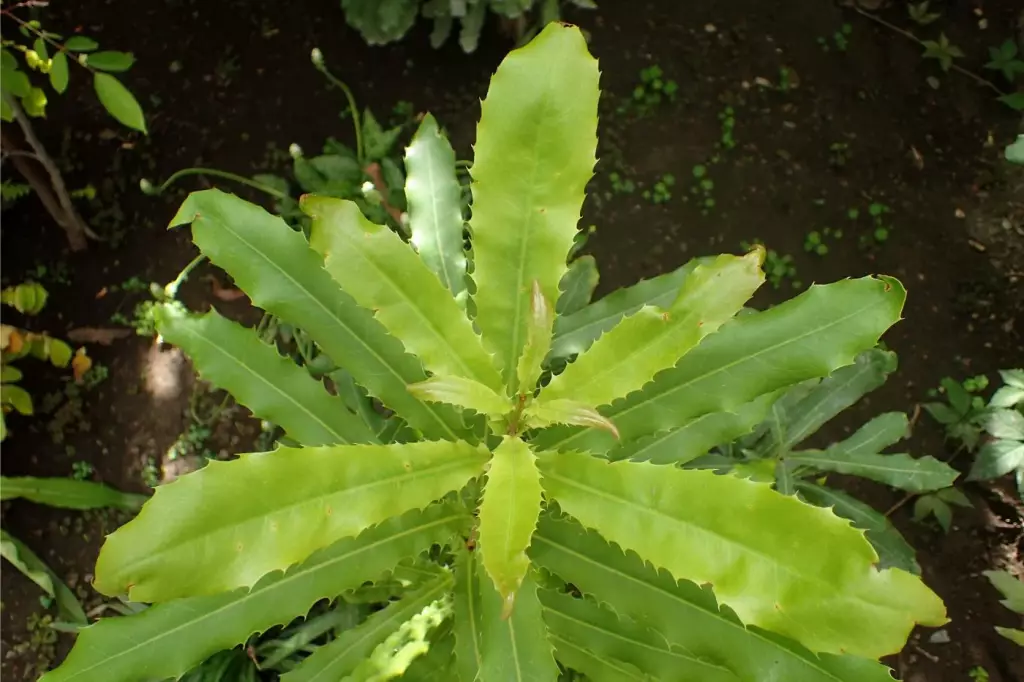
The glossy and dark green color of the leaves adds to the visual appeal of the macadamia nut tree. This rich green hue is indicative of the tree's health and vitality, and it contributes to the overall aesthetic value of the tree.
Furthermore, the leathery texture of the leaves provides durability and resilience, allowing the tree to withstand various environmental conditions.
The lanceolate shape of the leaves is not only visually striking but also functional. This particular leaf shape is well-suited for maximizing sunlight absorption, as it allows the leaves to orient themselves to capture sunlight efficiently for the process of photosynthesis.
Additionally, the lanceolate shape may help in reducing water loss through transpiration, as the narrow form of the leaves can minimize the surface area exposed to the surrounding air.
Characteristics of the macadamia tree flowers
The flowers of the macadamia nut tree are small and delicate, typically ranging in color from creamy white to a soft pinkish hue.
They are arranged in clusters, creating a visually appealing display when in full bloom. The appearance of the flowers is often described as dainty and elegant, adding a touch of beauty to the tree's overall aesthetic.
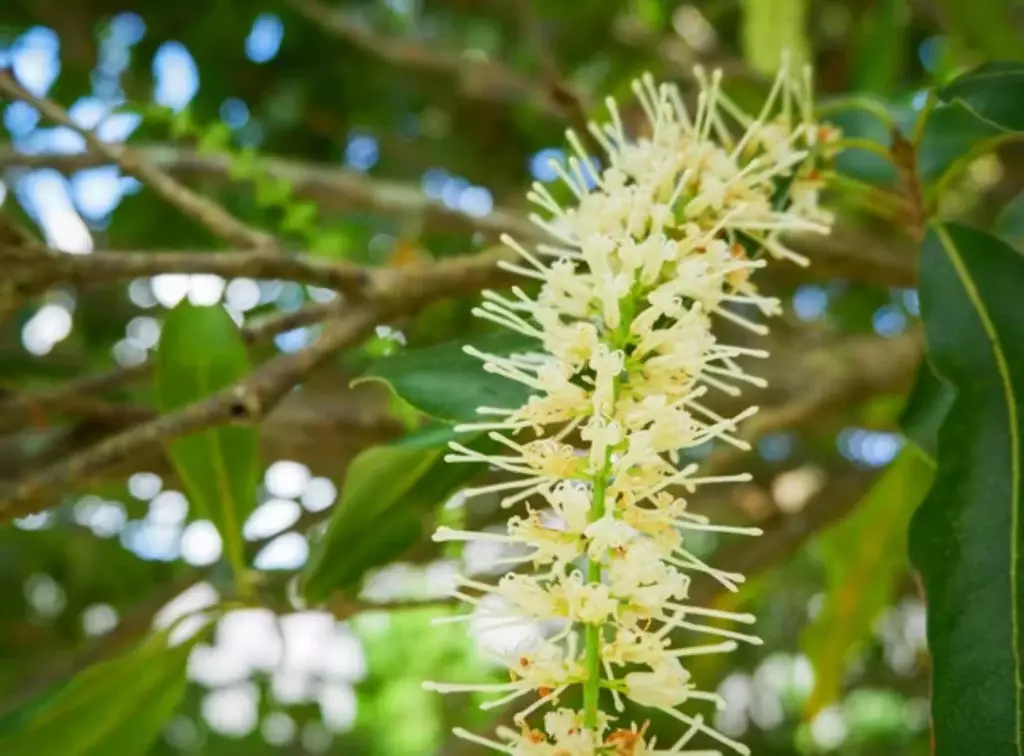
In terms of structure, the flowers of the macadamia nut tree consist of petals, sepals, stamens, and pistils, which are all essential parts of the reproductive system of the plant:
-
Petals and sepals: The petals are the outermost part of the flower and are responsible for attracting pollinators with their subtle coloration. The sepals protect the developing flower bud and provide support to the petals.
-
Stamens: Within the center of the flower, there are numerous stamens, which are the male reproductive organs. The stamens produce pollen, which is essential for fertilization.
-
Pistil: The pistil is the female reproductive organ of the flower. It consists of the ovary, style, and stigma. The ovary contains the ovules, which, when fertilized, develop into the macadamia nuts.
As for the smell, the fragrance of macadamia nut tree flowers is often described as sweet and pleasant, with a subtle hint of nuttiness. The aroma is not overpowering but rather delicate, adding to the overall sensory experience when in the presence of these blossoms.
The gentle scent of the flowers can attract pollinators such as bees, butterflies, and other insects, which play a crucial role in the pollination process, ultimately leading to the development of the nuts for which the tree is known.
The flowers of the macadamia tree rely on pollination to ensure a successful fruit set. This can occur through self-pollination or cross-pollination, with the assistance of wind or pollinators. Once the flowers are pollinated, they begin to develop into the nuts that are characteristic of the macadamia tree.
Fruit and nut formation in macadamia trees
Macadamia trees are renowned for their production of round, hard-shelled nuts with a smooth, woody husk, containing rich, creamy, flavorful nuts.
The formation of macadamia nuts is a fascinating process that begins with the development of flowers on the macadamia tree. These flowers are pollinated by wind or insects, leading to the formation of the fruit.
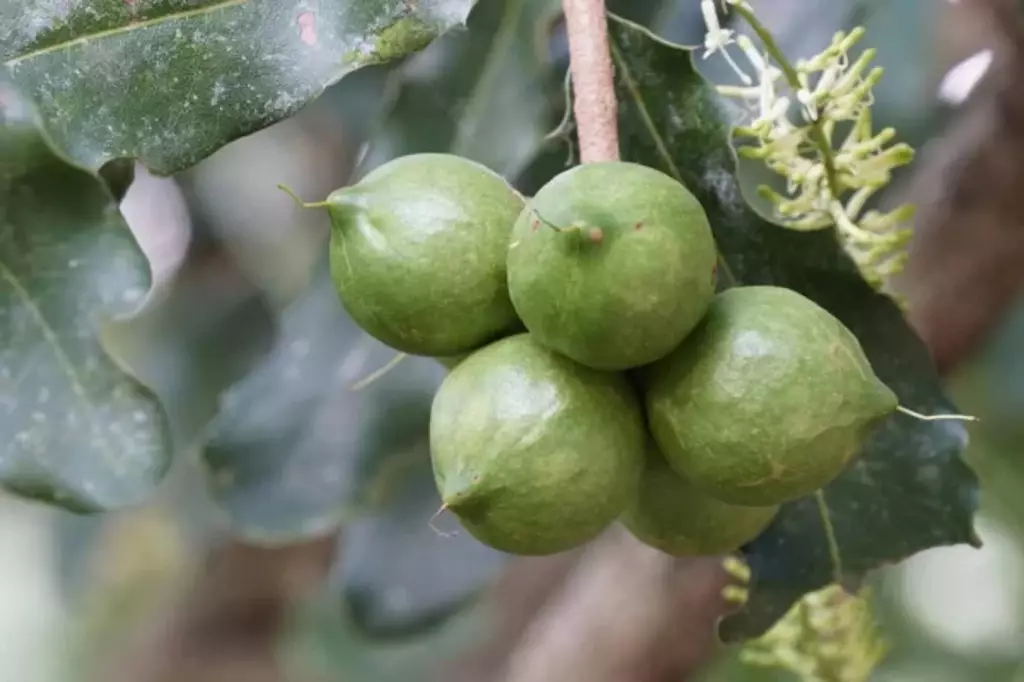
As the flowers are fertilized, they develop into a fruit known as a drupe. This drupe consists of a tough, woody husk that encases the precious macadamia nut inside. The husk serves as a protective layer for the developing nut, shielding it from environmental factors and predators.
As the nuts mature within the husk, they transform, developing their characteristic rich, creamy texture and flavor.
This process is influenced by various environmental factors such as sunlight, temperature, and soil quality. Adequate water and nutrients are essential for the development of high-quality macadamia nuts.
Once the nuts reach maturity, they are ready for harvest. The hard shells of the macadamia nuts require specialized equipment to crack open, revealing the delicious, flavorful nuts inside. If your macadamia nut tree is not producing fruits or nuts, here are a few reasons that might be causing it.
How to Identify Different Species of Macadamia
There are a few main species of macadamia, but only Macadamia integrifolia and Macadamia tetraphylla are commercially grown for their nuts.
The varieties you might encounter include 'Beaumont', which is a hybrid of these two species, featuring a rough shell, and 'Rough Shell', known as Macadamia tetraphylla in scientific terms, sporting a spiky exterior.
There are also many cultivars, like 'Cate', 'Beaumont', and 'Maroochy', with varying nut sizes and flavors. Macadamia ternifolia and Macadamia jansenii are less common and not typically cultivated for consumption.
The table below shows the differences between these Macadamia species helping you identify which is which:
| Species | Appearance | Flower | Nuts | Fruits | Leaves |
|---|---|---|---|---|---|
| Macadamia jansenii | Compact growth, dense foliage | Small, white | Hard-shelled, smooth surface | Green, round, maturing to brown | Dark green, leathery |
| Macadamia ternifolia | Medium-sized, spreading growth | Small, white to pinkish | Round, hard-shelled | Green, round, maturing to brown | Dark green, glossy |
| Macadamia integrifolia | Smooth shell, round, larger size | Creamy white, small | Larger, sweeter | Round, smooth | Long, narrow |
| Macadamia tetraphylla | Rough shell, spiky exterior, smaller size | Pink, larger | Smaller, more acidic | Oval, rough | Wide, four leaflets |
Macadamia jansenii is known for its distinctive pink or red new growth
Macadamia jansenii is a unique species of macadamia known for its distinctive pink or red new growth, which sets it apart from other macadamia species. This striking feature adds to the allure of this particular plant and makes it a sought-after addition to gardens and landscapes.
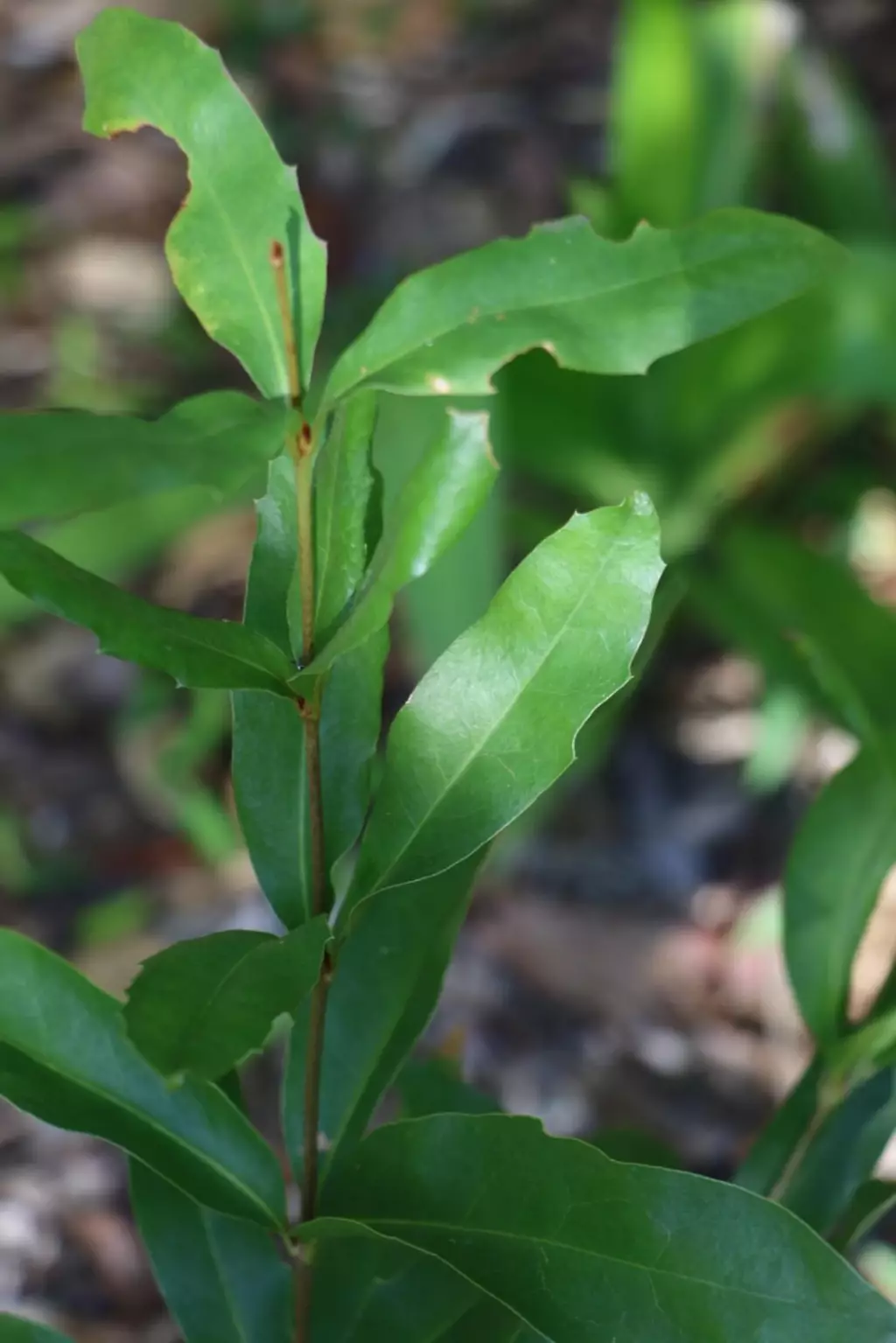
This is a result of anthocyanin pigments present in the leaves. Anthocyanins are responsible for the red, purple, and blue colors in many plants, and their presence in the new growth of Macadamia jansenii contributes to its visual appeal.
In addition to its aesthetic appeal, the pink or red new growth of Macadamia jansenii may also serve a functional purpose.
Some research suggests that anthocyanins may act as a form of protection for the plant, providing resistance to environmental stresses such as high light levels and UV radiation. This natural defense mechanism could contribute to the overall health and vitality of the plant.
Furthermore, the distinctive coloration of the new growth can also make a valuable ornamental plant in landscaping. The contrast between the pink or red leaves and the mature green foliage adds visual interest to gardens and can be used to create striking color combinations in mixed plantings.
Macadamia ternifolia is distinguished by its unique leaf arrangement
One of the distinguishing features of Macadamia ternifolia is its unique leaf arrangement, which consists of three leaflets per leaf. This characteristic sets it apart from other macadamia species, as they typically have a different leaf arrangement.
The three leaflets per leaf of Macadamia ternifolia contribute to its overall aesthetic appeal, giving the tree distinct and attractive foliage.

Macadamia integrifolia is known for its smooth-shelled nuts
The most notable feature of Macadamia integrifolia is, of course, its smooth-shelled nuts. The nuts are round or oval in shape and are enclosed in a hard, woody shell.
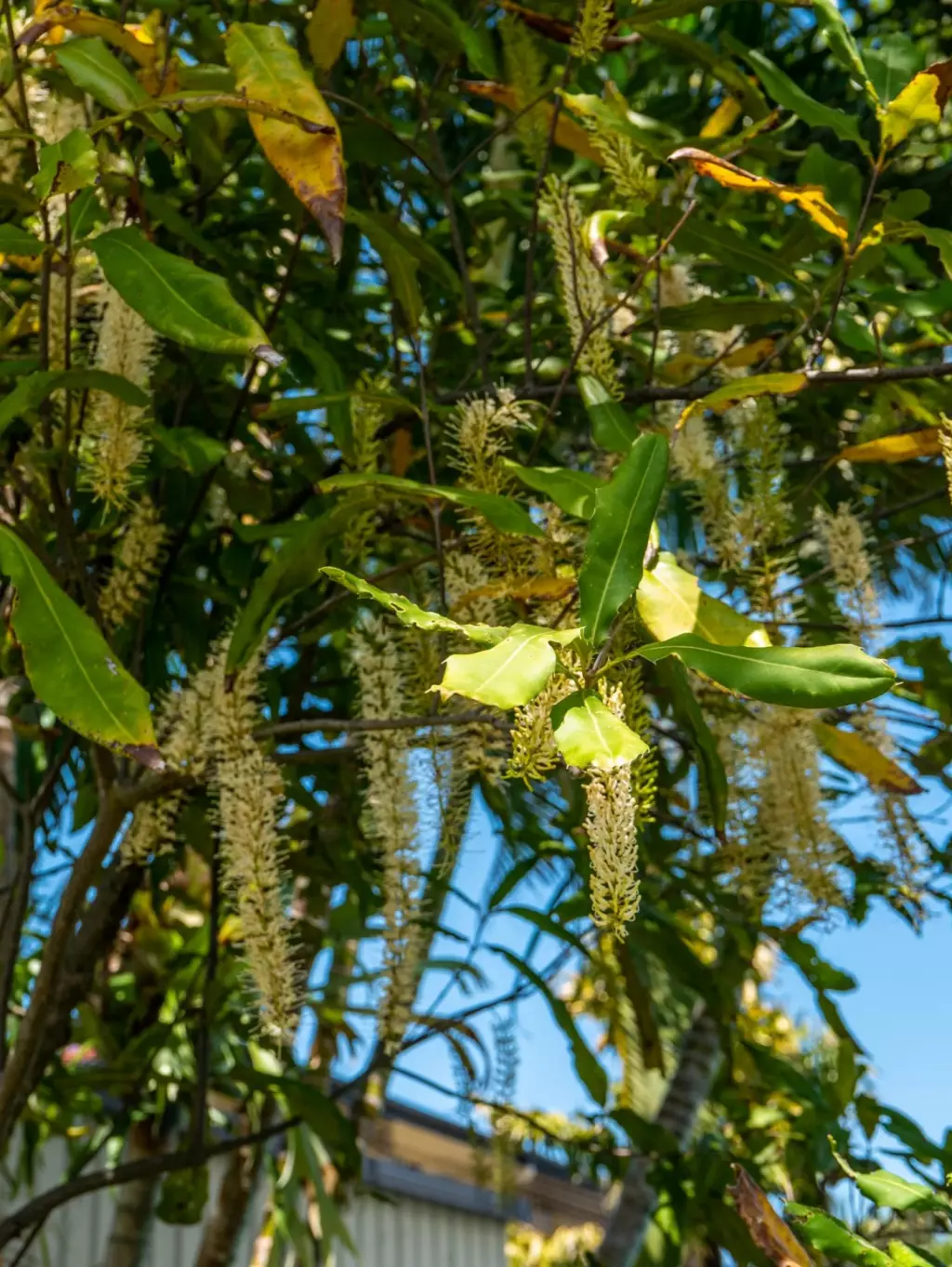
Unlike other macadamia species, which often have rough or textured shells, the smooth-shelled macadamia nuts have a remarkably smooth surface. This unique characteristic not only makes the nuts aesthetically pleasing but also contributes to their desirability for culinary and commercial purposes.
Macadamia tetraphylla is unique in that it has four leaflets per leaf
Macadamia tetraphylla, also known as the four-leaved macadamia, is indeed a unique species within the macadamia genus due to its distinctive feature of having four leaflets per leaf. This characteristic sets it apart from other macadamia species, which typically have two leaflets per leaf.
The four leaflets per leaf contribute to its distinct appearance and make it easily identifiable to those familiar with macadamia species. This unique feature is of interest to botanists and horticulturists who study and cultivate macadamia trees.
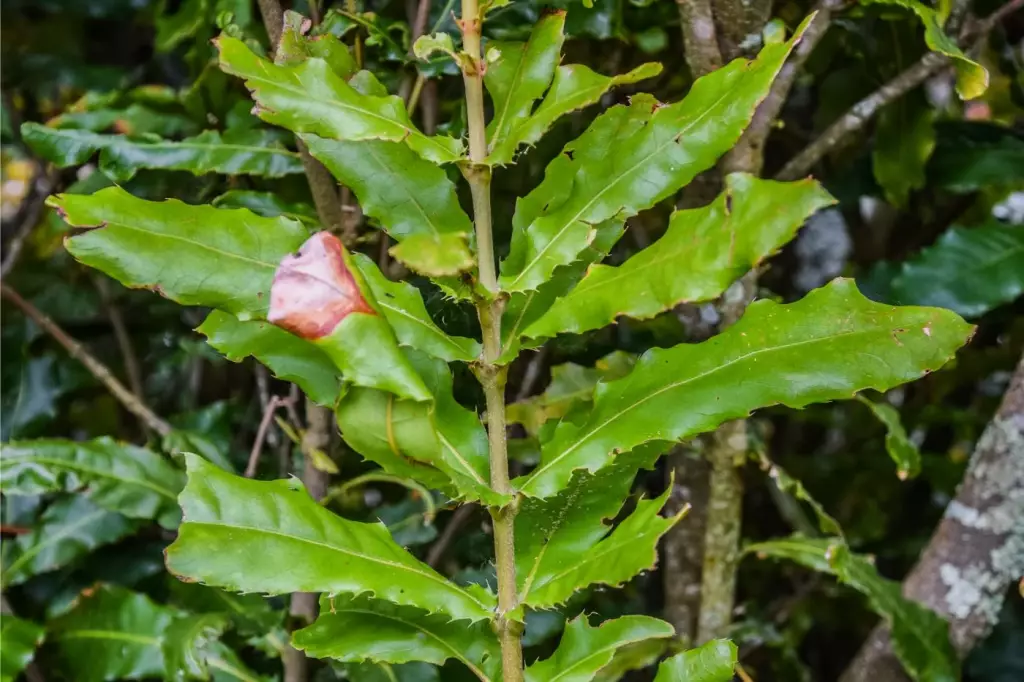
The presence of four leaflets per leaf in Macadamia tetraphylla may have implications for its growth and development, as well as its ecological adaptation. Understanding the genetic and physiological basis for this characteristic could provide valuable insights into the biology of this species and its evolutionary history.
In addition to its botanical significance, the four-leaved nature of Macadamia tetraphylla may also have practical implications for horticulturalists and farmers involved in macadamia cultivation. It may influence the tree's nutrient requirements, photosynthetic capacity, and overall productivity.
